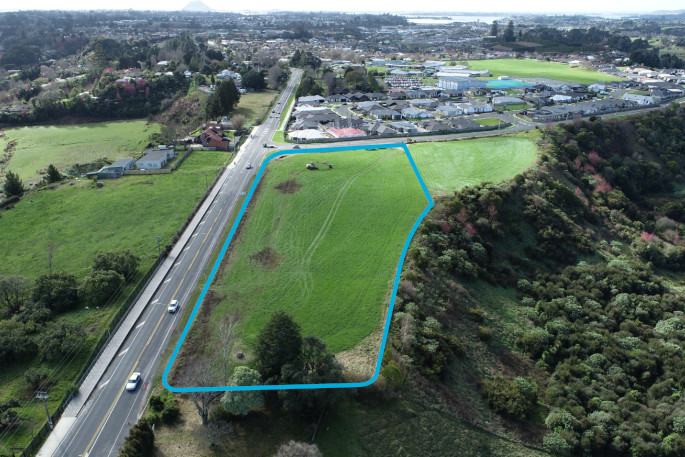On Wednesday, June 21, a significant date in Tauranga's history, a few hundred people are expected to gather at dawn at the Te Ranga battle site.
The public are invited to attend the 159th commemoration of the Battle of Te Ranga, with parking available on the Te Ranga Reserve which is located at the corner of Pyes Pa Road and Joyce Road.
Everyone is also welcome to place a wreath or floral tribute, and some will be planting a native tree.
Commemorations will begin at 7.30am with Western Bay of Plenty District Council Mayor James Denyer as the guest speaker this year.
Morning tea refreshments at Aquinas College will follow with a chance to see the future plans for the development of the reserve .
The Te Ranga battle is significant in shaping Tauranga due to its outcome, in that many see that the loss of lives was consequential in terms of the leadership at that time.
Some say that it's like New Zealand after the first World War, when a whole of generation of future leaders was lost; it was the same for this battle for Tauranga Maori. And then not long afterwards followed the confiscation of the land.
In 1864, following their humiliating defeat at the battle of Gate Pa which shocked New Zealand's European settler community and its military and political establishment, some of the British force at Tauranga returned to Auckland.
Lieutenant-General Duncan Cameron also returned to Auckland, leaving Lieutenant-Colonel Henry Greer in command of a large British garrison on the Te Papa peninsula. Greer was ordered to attack immediately should Maori forces begin constructing another pa in the district.
Meanwhile their opponents, led by Rawiri Puhirake and comprising fighters from Ngai Te Rangi, Ngati Ranginui, Ngati Rangiwewehi and Ngati Pikiao from Rotorua, and Ngati Porou from the east coast, began building a pa at Te Ranga, five kilometres inland from Gate Pa.
Unfortunately for the Maori, British reconnaissance discovered this fortification before it was completed.
On the morning of June 21, Greer left Camp Te Papa, now the Tauranga CBD, with a force of 600 -700 men.
Five kilometres inland from Gate Pa, the British force discovered the 500 to 600 Maori working on the defensive earthworks at Te Ranga.
Early that afternoon, following the arrival of reinforcements, Greer ordered men from the 68th and 43rd regiments and 1st Waikato Militia to advance.
The 43rd – ‘mad for revenge' for their losses at Gate Pa – 68th and 1st Waikato regiments stormed the rifle pits.
The battle that followed has been described as among the bloodiest of the New Zealand campaigns. In desperate hand-to-hand fighting, British troops exacted terrible vengeance for Gate Pa.
The Maori garrison was unable to hold the incomplete defences and slowly withdrew.
When Puhirake, the hero of Gate Pa himself was killed, the retreat became a rout.
British cavalry gave chase, but could not penetrate the nearby bush.
More than 100 Maori, including the chivalrous Henare Taratoa, were killed or mortally wounded at Te Ranga, as were 13 British troops.
The visiting iwi suffered heavy casualties, which contributed to their subsequent enthusiasm for the Pai Marire insurgency. The Maori defenders including Puhirake were buried in the trenches at Te Ranga.
Twenty-seven severely wounded Maori were taken to hospital at Te Papa camp.
Fourteen did not long survive the battle and were buried at Mission Cemetery. Among the mortally wounded was Te Tera of Ngai Te Rangi, the only one to be identified in official reports.
The one-sided battle at Te Ranga largely crushed resistance in the vicinity of Tauranga Harbour. Some Ngai Te Rangi and Ngati Ranginui surrendered arms to the British at Camp Te Papa in ceremonies on July 21 and 25. Much of their land was subsequently confiscated.
Peace came to Tauranga although this was far from the ‘surrender' the British claimed it to be.
Redevelopment of the land where the Battle of Te Ranga took place has been underway with plans to create a special place of remembrance and storytelling.
 Drone shot of Battle of Te Ranga site. Photo: Supplied.
Drone shot of Battle of Te Ranga site. Photo: Supplied.
Plans to restore the reserve were developed during the Te Papa Spatial Plan process.
The Pukehinahina Charitable Trust, in partnership with Ngāi Tamarāwaho, received funding from Tauranga City Council as part of an initiative to upgrade the historic site and provide more opportunities for the community to engage with the stories of Tauranga Moana.
Tauranga City Council allocated $531,000 for the project through the Long-Term Plan (LTP), and a further $114,000 was provided for site preparation, consultation, and planting.
The funds are allocated for use over 2022 and 2023 with the project due to be completed in 2023. Western Bay of Plenty District Council and Bay of Plenty Regional Council have also contributed funds.
Everyone is welcome to attend the 159th commemoration of the Battle of Te Ranga at the Te Ranga Reserve at 7.30am on Wednesday June 21.

.jpg)

0 comments
Leave a Comment
You must be logged in to make a comment.